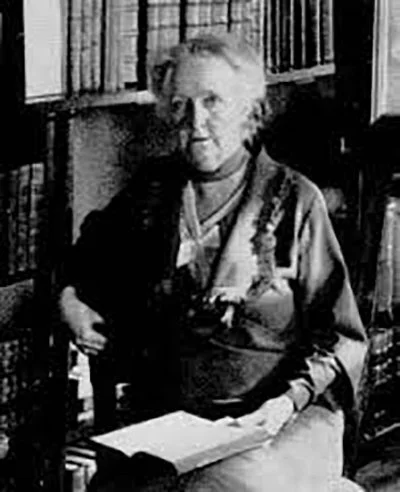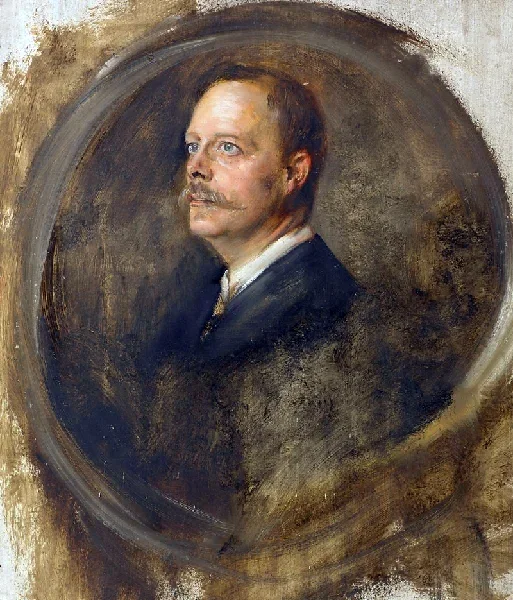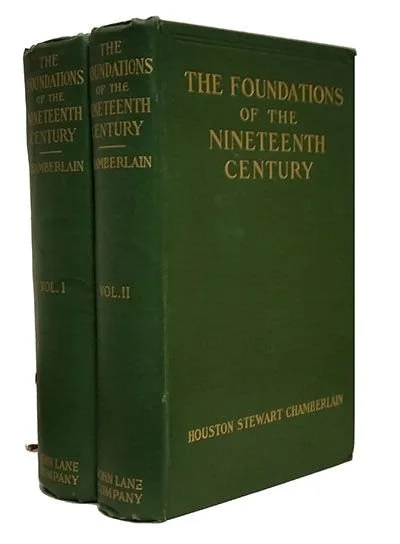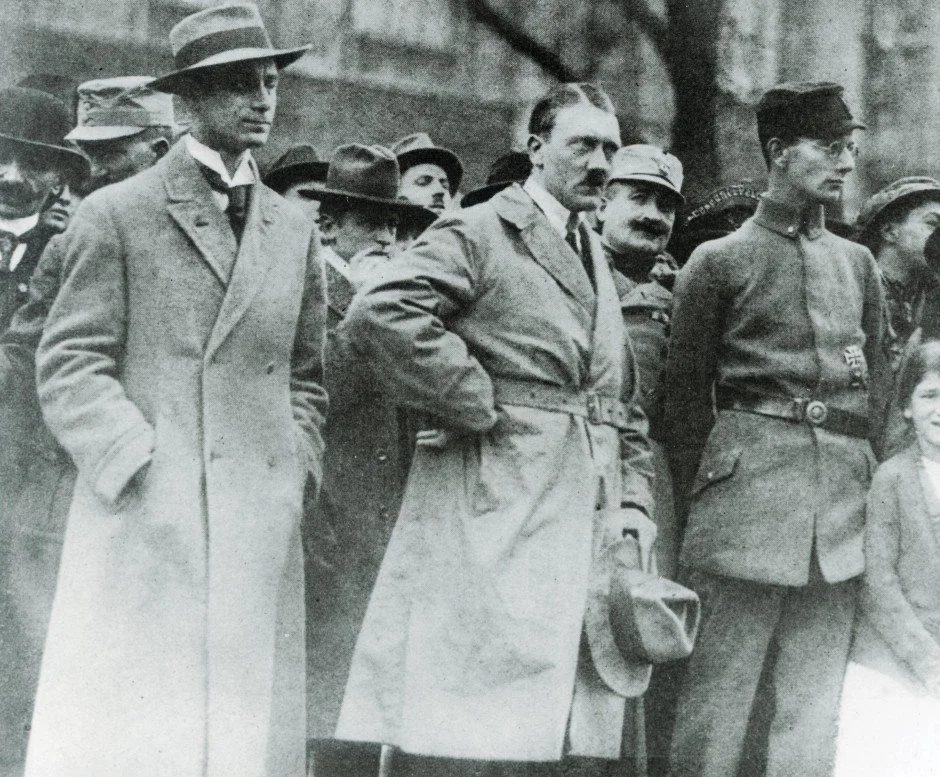Houston Stewart Chamberlain
Author of the“Gospel of the National socialist movement”
Houston Stewart Chamberlain (September 9, 1855 - January 9, 1927) was a British-born author of books on political philosophy, natural science and his posthumous father-in-law Richard Wagner. His two-volume book, The Foundations of the Nineteenth Century (1899) became one of the many references for the pan-Germanic movement of the early twentieth century, and, later, of Nazi racial philosophy.
Chamberlains philosophy would later be applied by the Nazis in their Final Solution, and while Chamberlain, who died in 1927 prior to the rise to power of Hitler and the Nazis, was not directly responsible for the Holocaust, and did not advocate the destruction of the Jews, his ideas of Aryan supremacy nonetheless were used by the Nazis as justification for those atrocities.
Early Life
Houston Stewart Chamberlain was born on September 9 1855, in Southsea, England. His mother, Eliza Jane, daughter of Captain Basil Hall, R.N., died before he was a year old, and he was raised by his grandmother in France.
Chamberlain's education was almost entirely foreign. It began in a Lycée at Versailles, but his father, Rear Admiral William Charles Chamberlain, had planned a military career for his son and at 11 he was sent to Cheltenham College, a public school which produced many future army and navy officers. However, the young Chamberlain was “a compulsive dreamer” more interested in the arts than military discipline, and it was in these formative years that he developed a fondness for nature and a near-mystical sense of self. The prospect of serving as an officer in India or elsewhere in the British Empire held no attraction for him. In addition he was a delicate child, and early health concerns put an end to Chamberlain's military prospects.
At age 14 he suffered from seriously poor health and had to be withdrawn from school. He then traveled to various spas around Europe, accompanied by a Prussian tutor, Herr Otto Kuntze, who taught him German and interested him in German culture and history.
Chamberlain then went to Geneva, where under Carl Vogt he studied systematic botany, geology, astronomy, and later the anatomy and physiology of the human body.
After schooling he moved to Dresden where "he plunged heart and soul into the mysterious depths of Wagnerian music and philosophy, the metaphysical works of the Master probably exercising as strong an influence upon him as the musical dramas." Chamberlain was immersed in philosophical writings, and became a nationalist author, one who was concerned more with art, culture, civilization and spirit than with quantitative physical distinctions between groups. This is evidenced by his huge study on philosopher Immanuel Kant. and His knowledge of Friedrich Nietzsche which is demonstrated in his Foundations of the nineteenth century work
In 1878 Chamberlain had met his first wife, the Prussian Anna Horst whom he was to divorce in 1905.
Prussian Anna Horst whom he was to divorce in 1905.
The Young Man
His most famous works and the ones used to base the Nazi ideology on
Richard Wagner known for his dramatic music, operas and antisemitism
The Writer, Philosopher and Linguist
Houston and his wife were world travelers and lived everywhere and nowhere: in Geneva (1879-1885), then in the art city of Dresden (1885-1889), followed by the multicultural metropolis of Vienna (1889-1909). In Geneva, he studied natural sciences at the university, where he obtained a degree. In addition, Houston was a language prodigy: he spoke English, French and German, and he also taught himself Dutch, Norwegian, Spanish, Italian and Serbian-Croatian. Endowed as he was, he did not have to work for the money and he had time to delve into botany, art and philosophy.
Houston Chamberlain's great hero was the composer Richard Wagner, about whom he published his first book Das Drama Richard Wagner's in 1892. A few years later, the beautifully illustrated biography Richard Wagner (1895) followed, which remained regarded as a standard biography in Germany until well after the Second World War. Houston was also a fan of the philosophical writings of Immanuel Kant (his favorite philosopher), Friedrich Nietzsche, Arthur Schopenhauer, Friedrich Schiller, Goethe, Voltaire and Rousseau, among others.
A few years after his divorce to Anna Horst and being so enamored with the Wagners that In 1908, he remarried Richard Wagner's daughter (and Franz Liszt's granddaughter): Eva von Bülow-Wagner.
Houston and Eva Chamberlain
The Widowed Eva Chamberlain
The Changing man
In Vienna, Chamberlain experienced a change. From a moderate liberal, he became a conservative and German nationalist. The city of Vienna and the intellectual climate there fed racist and anti-Semitic ideas. Vienna was a melting pot of Far right, Nationalist, racist and antisemitic ideals.
Just like Adolf Hitler, In Vienna, Chamberlain was very regularly present in salons to discuss politics, current affairs and history. He came into contact with the ideas of Viennese anti-Semites such as Karl Lueger (the mayor of the city), racial ideologist Guido von List. Houston Stewart Chamberlain also regularly met cultural figures in Vienna such as the poet Stefan George and novelist Thomas Mann. They shared an anti-modernist view of life and their appreciation for the 'German cultural race', which they believed was tainted by un-German Jewish influences, and needed to be renewed and purified.
The Foundations of the Nineteenth Century
At the request of the publisher Hugo Bruckmann in February 1896, Chamberlain began writing a survey of the almost completed nineteenth century. Soon he had come up with the title: Die Grundlagen des neunzehnten Jahrhunderts. This book, which had more than 1100 pages, appeared in 1899 in three volumes. In the various editions and editions that appeared afterwards, Chamberlain supplemented information. Until 1914, 100,000 copies of the book were sold.
The core of Chamberlain's historical-philosophical argument was that history was determined by 'races' and racial contrasts: 'Rasse ist alles; es gibt keine andere Wahrheit' (race is everything, there is no other truth), he wrote. Whereas Karl Marx placed the class struggle at the centre of the course of history, in Chamberlain's eyes race and racial struggle were the driving force in history. For example, the Roman Empire had collapsed due to race mixing: social cohesion disappeared and the empire weakened. The same process was now going on again in Europe. Since Goethe's death in 1832, according to Chamberlain, the so-called 'Jewish era' had begun. Chamberlain sounded the alarm. In doing so, he presented the Aryan, Germanic race as the chosen people to rule the earth.
Chamberlains seminal work “the foundations of the nineteenth century” highly influenced the Nazis 25 point manifesto”
Alfred Rosenberg and Hitler
Verstraets biogrpahy of Chamberlain
Chamberlain's ideas particularly influenced Alfred Rosenberg, who became the Nazi Party's in-house philosopher. In 1909, some months before his 17th birthday, Rosenberg picked up a copy of Chamberlain's The Foundations and wrote of the moment: "I felt electrified; I wrote down the title and went straight to the bookshop." In 1930 Rosenberg published The Myth of the Twentieth Century, a homage to and continuation of Chamberlain's work
Chamberlain's ideas would be embraced and refined by the Nazis a few decades later. In particular, Nazi ideologist Alfred Rosenberg and of course Adolf Hitler, who met Houston Stewart Chamberlain in person just before his death. To what extent the Nazis used Chamberlain's ideas can be read in the last part of Verstraete's biography. Chamberlain was a rascisit and and antisemitic however he didn’t suggest murdering the Jewish race and as such didn’t advocate the Holocaust but there in no doubt that he influenced it.
Chamberlain the Nazi
Chamberlain joined the Nazi Party and contributed to its publications. Its primary journal, the Völkischer Beobachter, dedicated five columns to praising him on his 70th birthday, describing The Foundations as the "gospel of the National Socialist movement". In January 1924, Chamberlain published an essay praising Hitler as one of the "rare beautiful beings... a man of genuine simplicity with a fascinating gaze" whose words "always come directly from the heart". Chamberlain praised Hitler for embarking upon a "Vernichtungskrieg" ("war of destruction") against all of Germany's enemies.
In May 1926, one year before Chamberlain's death, Hitler and Goebbels visited him in Bayreuth. Chamberlain assured Hitler of his belief that he was the "chosen one" destined to lead Germany back to greatness after the defeat of 1918, to make the Reich a world power, and finally smash the Jews. Much of Hitler's genuine affection for Chamberlain was due to the fact that Chamberlain never lost his faith in Hitler's potential, even at time in the mid-1920s when the NSDAP was faring very poorly
Chamberlain continued living in Bayreuth until his death in 1927. Chamberlain died on 9 January 1927 and his ashes were buried at the Bayreuth cemetery in the presence of Hitler along with several highly ranked members of the Nazi Party
Learn more about Chamberlain and visit his grave in this video











